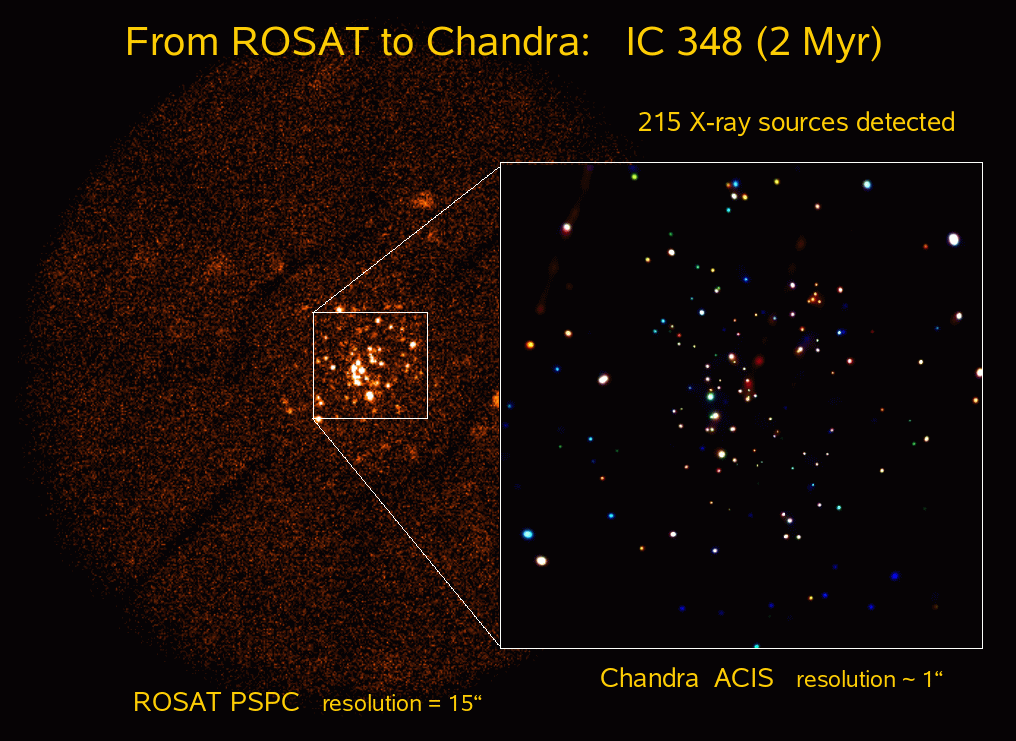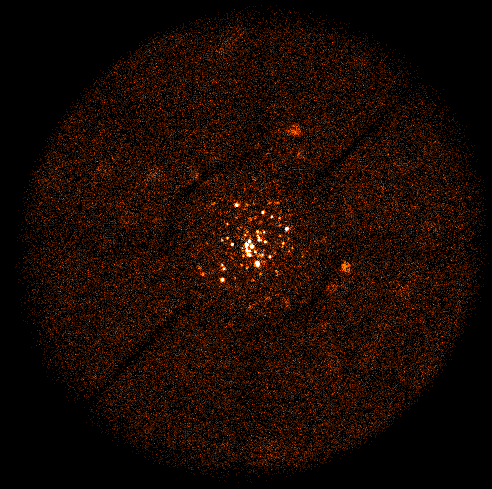
These images show deep ROSAT, and (below) Chandra X-ray observations of the young stellar cluster IC348 in the Perseus molecular cloud complex.
The first is the full image of the ROSAT PSPC observation (radius 1 degree), where the dense cluster of X-ray sources can be seen in the center. In our detailed analysis we could detect more than 100 X-ray sources (for further information see our A&A paper ).

The next two images show the central region (about 20 times 20 arcmin) of IC348. The left image is a true color ROSAT X-ray image, the right one is an optical image of about the same region.
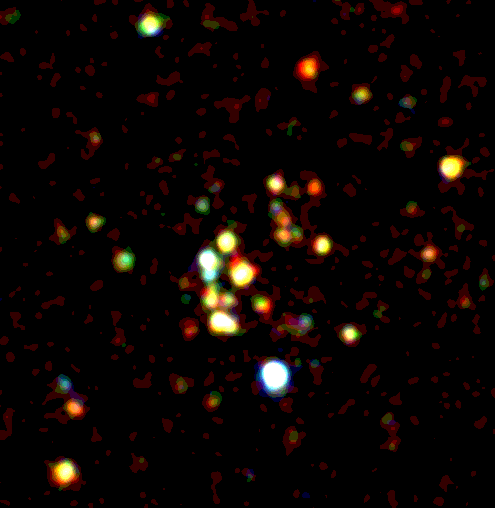
|
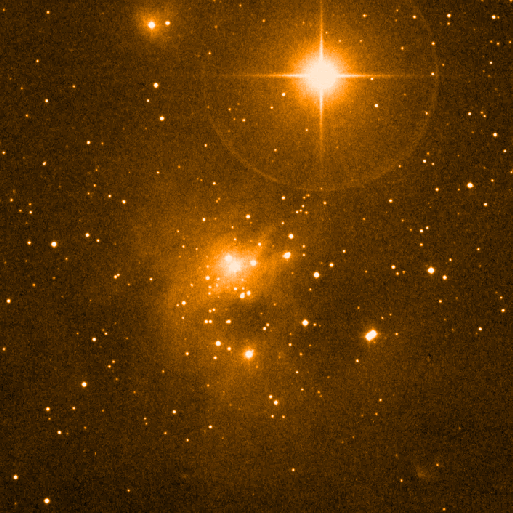
|
The next images again show the central region of IC348. The left image was taken with the PSPC detector, and one can see that the density of X-ray sources is so high that significant blending occurres. The image on the right shows the same field but was taken with the HRI detector which has a considerably better spatial resolution and produced a much ``sharper'' image.

The strongest source in the PSPC image is the T Tauri star LHalpha 92 that displayed a giant X-ray flare during this observation (see the abstract of our A&A paper on this flare). The next image shows `true colour' images of the central region at one time interval before the flare (left) and another interval durnig the flare (right). At the maximum of the flare the count rate of LHalpha 92 was more than 100 times higher than before the flare. The blue colour of the flare source indicates very high plasma temperatures (up to 50 million degrees) during this event.
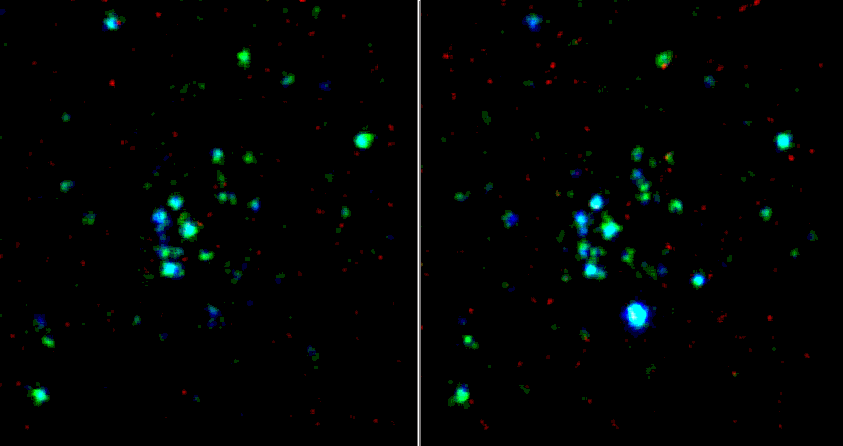
Here we compare the ROSAT image to the much sensitive and higher-resolution Chandra image. The results of the Chandra study are described in two papers (paper I, paper II) in the Astronomical Journal
